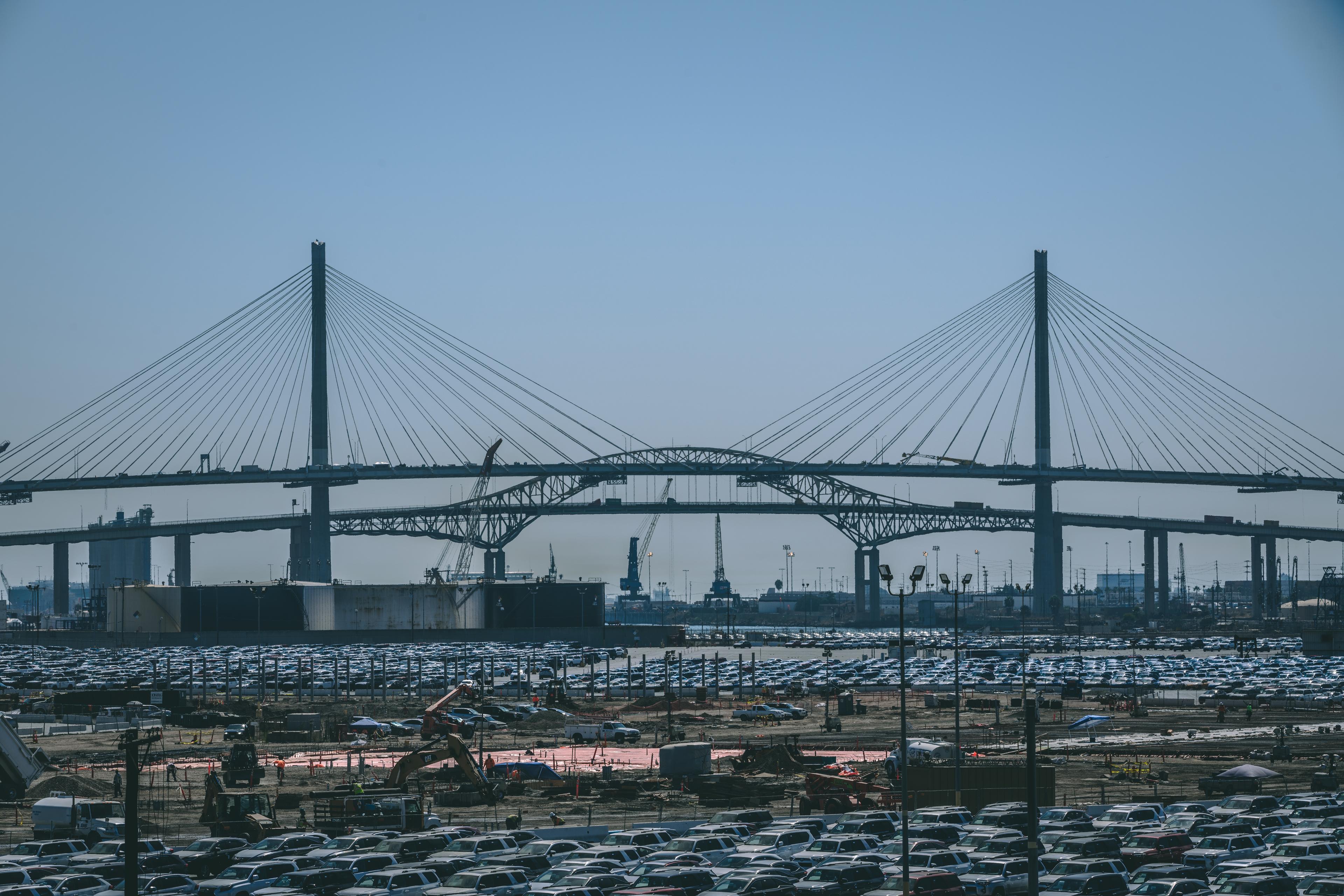Long Beach International Gateway Bridge

The new Gerald Desmond cable-stayed bridge is a strategic hub for links to the city and the port. The project was particularly complex from a technical and organisational point of view because it involved keeping road and shipping traffic to and from the port open throughout the duration of the project; there were also plans to move numerous underground utilities and find solutions to significant obstacles, such as a thermal power plant, numerous oil extraction wells and an operational railway line.
The construction of the new Gerald Desmond Bridge, today Long Beach International Gateway, responds to the need to replace the existing structure with a more modern one that complies with earthquake standards, as well as improving traffic flows. Construction began on the current bridge in 1960, and it has since become the symbol of Long Beach. However, since it could no longer support the current, ever-increasing volumes of traffic, the bridge have been demolished.

Technical data
+ + +
Structural steel
+ + +
Length of the bridge
+ + +
m Length of main span
+ + +
m Length of longest cable
As already pointed out, the construction of the Long Beach International Gateway became necessary due to the age of the existing bridge and the increase in traffic to and from the Port of Long Beach, approximately 1200 vehicles/hour (peak). In fact, the Port of Long Beach shares the national record with the Port of Los Angeles for the volume of goods in transit.
The project, financed with state funds (the Port of Long Beach, Caltrans and Metro) and with a contribution from federal funds, consists of two approach viaducts along the east-west route, and a main cable-stayed bridge that crosses the main channel, connecting the offshore area with the inner quays.
The project involves:
- 320 foundation piles with a diameter of 2.5 m, 1.6 m and 1.5 m, up to 50 m deep and cast on site. The piles are constructed using an oscillator and with temporary casing
- A cable-stayed bridge with two main octagonal hollow towers, about 160 m high, with a central span of 330 m, and two side spans about 150 m long.
- The steel load-bearing structure for the deck will be pre-assembled in segments on site, and then raised by a hoisting system, located on the previously positioned blocks that are already held under tension by the final stays.
- This will involve the use of pontoons, with the aim of transporting, to be positioned on site, the segments located directly on the access channel to the port.
- Two access viaducts (on the east and west sides relative to the cable-stayed bridge), divided into two separate carriageways with three and four lanes in each direction.
Long Beach International Gateway Bridge, USA | Webuild